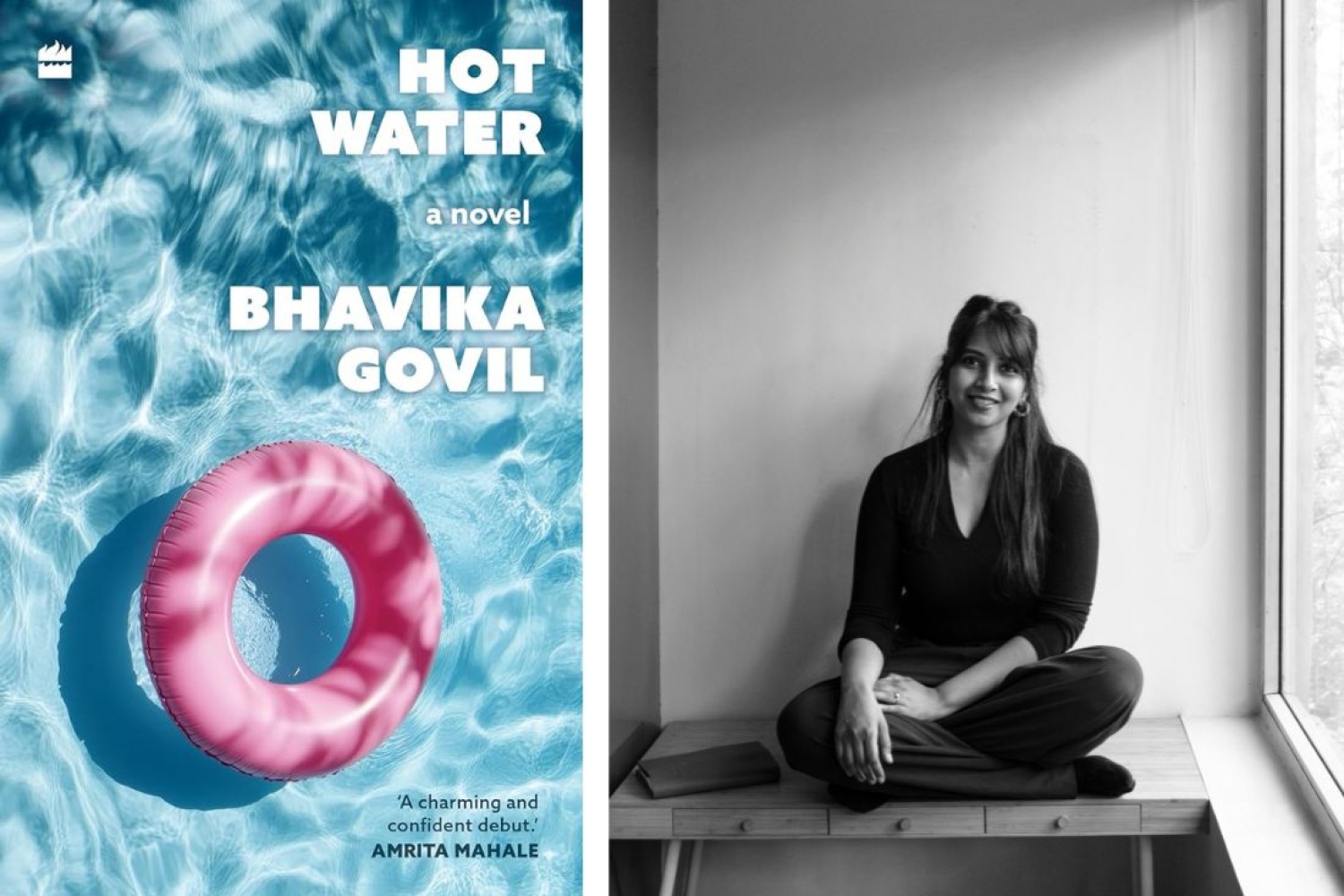

Bhavika Govil’s Hot Water captures the symbiotic relationship that shapes their understanding of identity. This coming-of-age story revolves around a close-knit butunconventional family of three, who find themselves in troubled waters, one summer when the children begin swimming lessons. The novel invites readers into the intimate and sometimes claustrophobic perspectives of children, revealing not only a mother’s strengths and flaws but also how their own experiences, as siblings intertwine, with her journey.
In this interview, the author shares her insights on family dynamics, the structure of her novel and her hopes for readers to connect with the characters of Hot Water.
CHILDREN’S LENS INTO MOTHERHOOD
I have always been drawn to novels about families and motherhood. Mothers are seen most closely by her children in the early years. Until they are six, even seven months old, babies are known to think of themselves simply as a little extension of their mothers. They don’t know that they’re their own person, that they are separate bodies. It’s a symbiotic relationship from the beginning. With Hot Water, writing part of the novel from the children’s perspective felt like the natural angle for me to think about motherhood and this particular family. It was interesting to observe Ma from this close, vivid, sometimes even claustrophobic perspective of her children, Mira and Ashu—and see her with all her qualities and flaws—or at least all that are visible to them while they contend with their own experience of life as people and as siblings. For this reason, the novel is as much a story about childhood as it is about motherhood for me. Perhaps more.
BECOMING A WRITER
I wrote a lot as a child. I copied out stories from children’s books, crumpled drafts of silly poems I wrote and threw them behind the bed frame. I wrote letters to family members, forced them to write me back. It was a strange reverence for the written word and a desire to read and be read. It was only in my twenties that I started writing short stories and essays of my own after hours of day jobs. I began to dream of what it would be like to be an author, and to write a novel. Although, I suspect somewhere in those crumpled papers in my childhood was the ambition for it all along.
HOPE FOR READERS
I wrote this book and emerged a simple truth: this is, like the novels I love to read, a book about many things: family life, the poetry of childhood, early years of motherhood, sibling relationships, boyhood, secrets and desires—set over one summer. My biggest hope would be for a reader to simply find what they need in Hot Water at the right time. Books have done that for me. I also hope that they’ll remember Mira, Ashu and Ma and their story long after they’ve put the book back on their bedside table.
ON FORM
‘You build a novel,’ says Rachel Cusk. ‘You have to build it like a building so it stays standing when you’re not in it.’ For a long time, I thought that Hot Water was the story of one narrator. A few months into the writing process however, I was surprised to hit an unexpected roadblock. I neared the end of this character’s story far earlier than I had anticipated. I realised that the novel would only be whole and complete if I heard and wrote the other voices in this story. Brick by brick, I took the book apart several times to interlay the strands and play with how the individual voices speak to each other, similar to how members of a family are in conversation with each other. I did this until my editor and I were happy with the structure and were convinced it would stay standing.
INTIMATE INTERACTION, LOVE AND DESIRES
Desire, intimacy and love are reserved for the private life of adults. Children are uncomprehending listeners and observers of the world around them. In most families, especially in the Indian context, children never see a hug exchanged, or a moment of affection between the adults—for the most part. But what if this veil of privacy was removed?
I was curious to see what happens in a close-knit and unconventional house-hold of three like the one in this novel, where the children are much more privy to and witness to their mother’s life. I found the space between what children see (everything) and what they understand fascinating to write into as a way to understand family dynamics. Ultimately, this is a coming-of-age story of three characters and about their first experiences with intimacies, whether experienced, observed or imagined. Even if they don’t have the vocabulary for it just yet.
Words Paridhi Badgotri
Date 12.04.2025